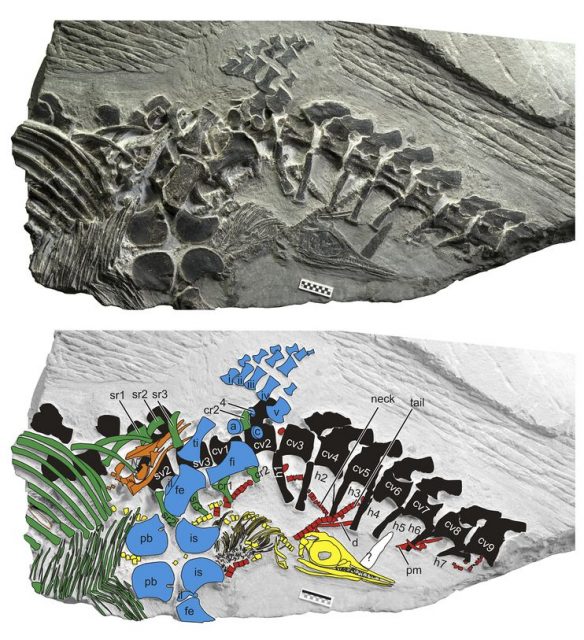MI weekly selection #62

Mesozoic-era ichthyosaur had live births on land
The fossil remains of a 248 million-year-old ichthyosaur have revealed that the Mesozoic-era reptile died while giving birth with two offspring still inside it. Scientists were surprised to note that the birth was occurring on land, which goes against a long-held belief that the sea creatures delivered their young in water. Researchers noted that the young were coming out head first, which is associated with land animals; marine animals are born tail first.
National Geographic Daily News
Genetic timeline of how human populations mixed
Geneticists are deciphering how human populations mixed over the past 4,000 years in an effort to provide new information to historians. The researchers have developed a way to affix a date on major blending events by identifying chromosomal segments using statistics gathered from samples of genomes from throughout the world.
Builder robots inspired by termites
Robots designed to work independently and with few rules are capable of building structures that resemble castles and pyramids. Researchers were inspired by termites, which create structures without communicating, when designing their robots, which could be used to build structures in places humans would have difficulty navigating, such as Mars, or that are too dangerous, such as building levees during flood conditions.
New glasses help surgeons see cancer cells
New technology may help surgeons visualize the distinction between normal tissue and cancer cells with the help of a contrast agent. The new technology, dubbed “cancer goggles,” is still in the testing phase, but its creator, Dr. Samuel Achilefu, director of the Optical Radiology Lab at Washington University in St. Louis, thinks the technology could have many applications. The tool will be tested by veterinarians surgically removing cancer from dogs at the University of Missouri veterinary school, and human testing will follow.
Viking code cracked
Runologist K. Jonas Nordby of the University of Oslo has deciphered the ancient Norse jötunvillur code, found on nine known inscriptions. Nordby used a thirteenth-century stick on which two men had carved their names, Sigurd and Lavrans, in standard runes and in the code. The confusing system requires that the reader have a good working knowledge of the runes in order to swap them out with others for sounds in their names.